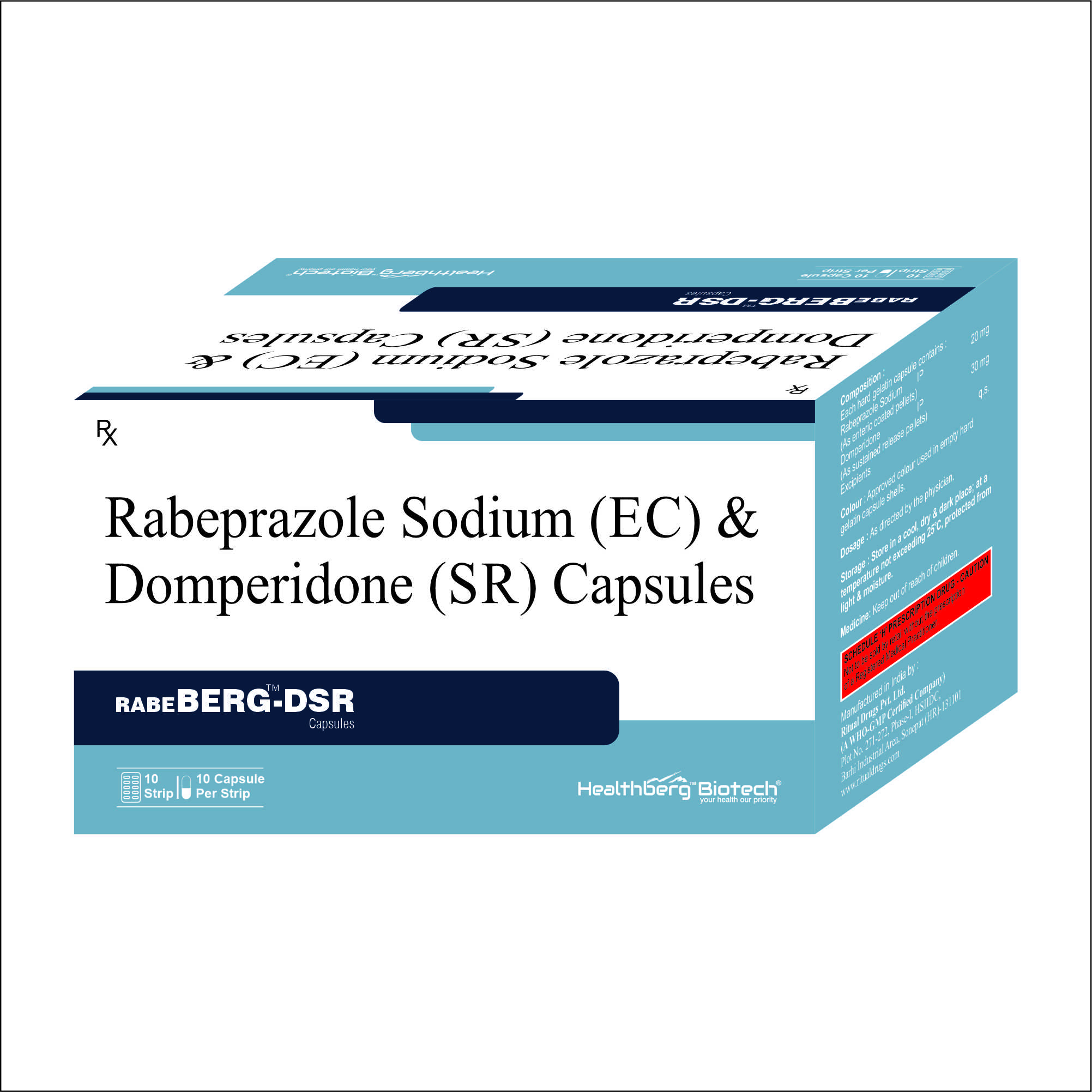Uses:
- Gastroesophageal Reflux Disease (GERD): The combination of rabeprazole sodium 20 mg and domperidone SR 30 mg capsules can be prescribed to manage gastroesophageal reflux disease (GERD), a condition where stomach acid flows back into the esophagus, causing symptoms like heartburn and regurgitation. Rabeprazole reduces stomach acid production, while domperidone helps improve gastric motility.
- Peptic Ulcers: This combination may be used to treat peptic ulcers, including duodenal ulcers and gastric ulcers. Rabeprazole helps heal ulcers by reducing stomach acid production, and domperidone aids in promoting the movement of food through the stomach and intestines.
- Gastroparesis: Domperidone is often used to manage gastroparesis, a condition where the stomach takes longer than usual to empty its contents. This combination can help improve stomach emptying and reduce symptoms like bloating and nausea.
- Nausea and Vomiting: Domperidone is commonly used to relieve nausea and vomiting caused by various factors, including certain medications and conditions.
Problems and Considerations:
- Side Effects: Common side effects of rabeprazole sodium can include headache, nausea, stomach pain, and diarrhea. Domperidone can cause side effects like dizziness, dry mouth, and changes in heart rate.
- Interactions: Both rabeprazole and domperidone can interact with other medications. Inform your healthcare provider about all medications and supplements you’re using to avoid potential interactions.
- Long-Term Use of PPIs: Long-term use of proton pump inhibitors (PPIs) like rabeprazole should be discussed with a healthcare provider due to potential effects on nutrient absorption and the risk of certain infections.
- Rebound Acid Hypersecretion: Stopping PPIs abruptly can lead to increased stomach acid production. If you want to discontinue the medication, consult your healthcare provider for guidance.
- Kidney and Liver Function: Individuals with impaired kidney or liver function may require dosage adjustments for both medications.
- Pregnancy and Breastfeeding: Consult a healthcare provider if you’re pregnant, planning to become pregnant, or breastfeeding. The use of both medications during pregnancy or breastfeeding should be carefully considered.
- Consultation with Healthcare Provider: The combination should be taken under the guidance of a healthcare provider who can assess your specific condition and medical history.
- Allergic Reactions: Allergic reactions to any medication are possible. If you experience signs of an allergic reaction, such as rash, itching, swelling, severe dizziness, or difficulty breathing, seek medical attention immediately.
- Underlying Conditions: Inform your healthcare provider of any medical conditions you have, as these can influence the use of this combination.
In summary, the combination of rabeprazole sodium 20 mg and domperidone SR 30 mg capsules is commonly used to manage GERD, peptic ulcers, gastroparesis, and nausea. It’s important to use this combination under the guidance of a healthcare provider, adhere to recommended dosages, and be aware of potential interactions and considerations. If you have any concerns or questions about its use, consult a medical professional.
